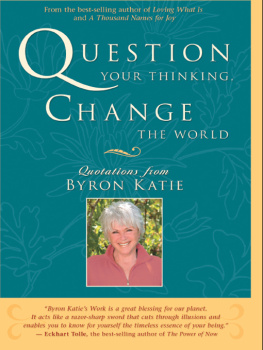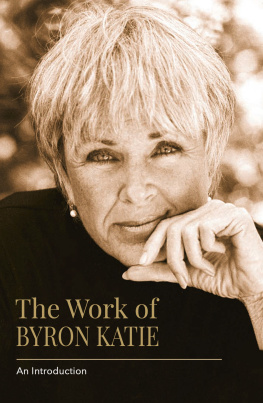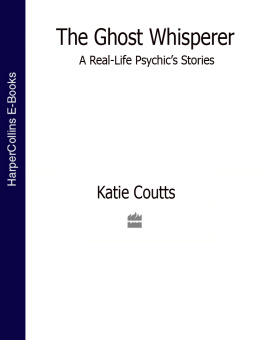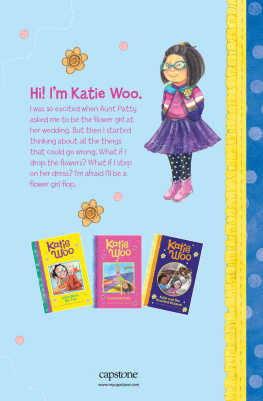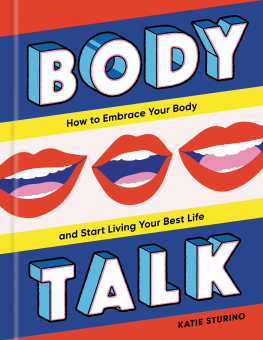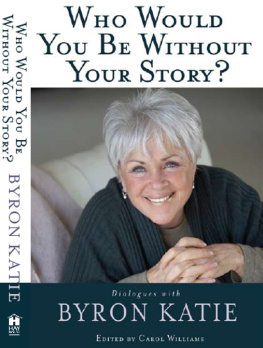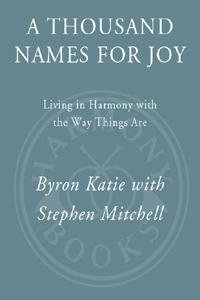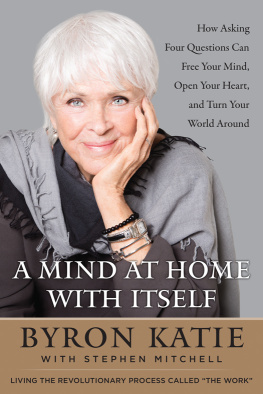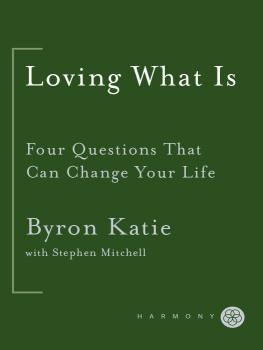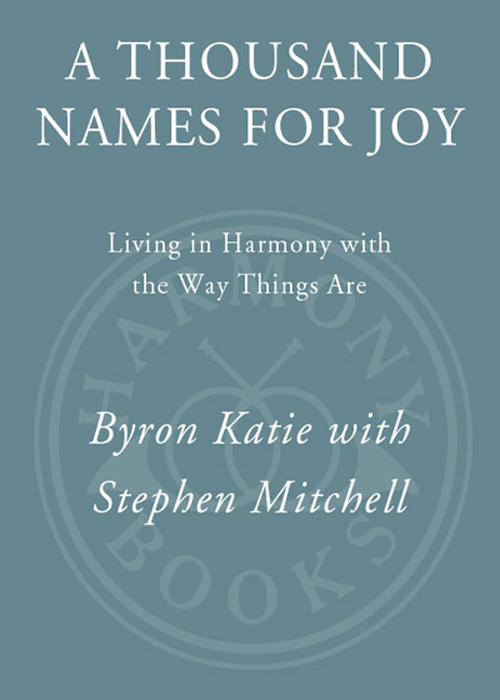
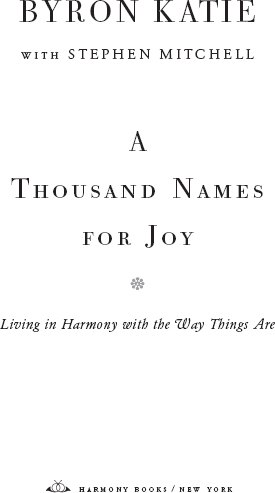
C ONTENTS


To you.
P REFACE
T his book is a portrait of the awakened mind in action. It is also Byron Katies response to the Tao Te Ching (pronounced Dow De Jing), the great Chinese classic that has been called the wisest book ever written.
Lao-tzu, the author of the Tao Te Ching, may have lived in the sixth century B.C.E. , or he may be entirely legendary. I like to imagine him in frayed robes, an old man with a wispy beard, who spends much of his time in delighted silence, always available to people, serenely observing the infinite ways in which they make themselves unhappy. In many chapters of the Tao Te Ching, Lao-tzu describes himself through a figure called the Master, the mature human being who has gone beyond wisdom and holiness to a world-including, world-redeeming sanity. Theres nothing mystical or lofty about the Master. He (or she) is simply someone who knows the difference between reality and his thoughts about reality. He may be a mechanic or a fifth-grade teacher or the president of a bank or a homeless person on the streets. He is just like everyone else, except that he no longer believes that in this moment things should be different than they are. Therefore in all circumstances he remains at ease in the world, is efficient without the slightest effort, keeps his lightness of heart whatever happens, and, without intending to, acts with kindness toward himself and everyone else. He is who you are once you meet your mind with understanding.
A little about the author of this book. Byron Kathleen Reid (everyone calls her Katie) became severely depressed in her early thirties. She was a businesswoman and mother living in a little town in the high desert of southern California. For almost a decade she spiraled down into paranoia, rage, self-loathing, and constant thoughts of suicide; for the last two years she was often unable to leave her bedroom. Then, one morning in February 1986, out of nowhere, she experienced a life-changing realization. In the Buddhist and Hindu traditions there are various names for an experience like this. Katie calls it waking up to reality. In that instant of no-time, she says,
I discovered that when I believed my thoughts, I suffered, but that when I didnt believe them, I didnt suffer, and that this is true for every human being. Freedom is as simple as that. I found that suffering is optional. I found a joy within me that has never disappeared, not for a single moment. That joy is in everyone, always.
Soon afterward, rumors arose about a lit lady in Barstow, and people started seeking her out, asking how they could find the freedom that they saw shining in her. She became convinced that what they needed, if anything, was not her personal presence, but a way to discover for themselves what she had realized. Katies method of self-inquiry, which she calls The Work, is an embodiment, in words, of the wordless questioning that had woken up in her on that February morning. It is a simple yet extremely powerful method and requires nothing more than a pen, paper, and an open mind. As reports spread about the remarkable transformations that people were experiencing through The Work, Katie was invited to present it publicly elsewhere in California, then throughout the United States, and eventually in Europe and across the world. She has been traveling for fifteen years now, sometimes nonstop, and has brought The Work to hundreds of thousands of people at free public events, in prisons, hospitals, churches, corporations, battered womens facilities, universities and schools, at weekend intensives, and at her nine-day School for The Work.
Katie doesnt know much about spiritual classics; in fact, before we met, she had never even heard of the Tao Te Ching. But she does know about joy and serenity, and she knows about the mind: how it can make us miserable, how we can use it to get free. So, from one point of view, Lao-tzu is a colleague, someone who has the same job, someone to have a conversation with, never mind that hes dead. This book is that very interesting conversation. Proceeding, like the Tao Te Ching, as variations on a theme, it expresses the same fundamental realization in many ways, under many circumstances.
Heres how the book came about. When I first met Katie, I was profoundly impressed by her openness of heart and her wisdom, which seemed to be a kind of transparence. She was a total innocent: she had read nothing, she knew nothing, about Buddhism or Taoism or any other spiritual tradition; she just had her own experience to refer to. The most wonderful insights would pop out of her mouth, sometimes straight from a sutra or an Upanishad, without any awareness on her part that anyone had ever said them before. Early in our marriage, partly out of curiosity, I began reading to her from the great spiritual teachers: Lao-tzu, the Buddha, the Zen masters, Spinoza, and others of that ilk. (She calls them your dead friends.) Katie would take in their words, nodding sometimes, or saying, Thats accurate, or Yes, its exactly like that! Occasionally, to my surprise, she would say, Thats true, as far as it goes, but its a little off. Heres how Id say it.
Eventually I read her my version of the Tao Te Ching, all eighty-one chapters of it, and wrote down her responses, which were the raw material for this book. Sometimes, at my prompting, she would respond to every line; often she would focus on one passage, or elaborate on just a few lines. (The epigraphs that begin each of the following chapters quote the lines from the Tao Te Ching that are most relevant to what she is talking about.) Along the way, I would ask her to refine or expand upon something in the text, or I would point her in a particular direction that seemed helpful. Sometimes she had no reference for a question, and I felt as if I were asking a fish what its like to live in water. I suggested the specifics for beautiful and ugly in chapter 2, for example, since I adore Mozart and I dont yet appreciate rap. Its useful that I have these strong likes and dislikes; it gives Katie a reference for concepts such as noise, which are outside her experience of reality.
When we first began talking about the text, Katie asked me what Tao means. I told her that literally it means the way, and that its a word for ultimate reality, or, in her own terms, the way of it: what is. She was delighted. But, she said, I dont understand concepts like ultimate. For me, reality is simple. Theres nothing behind it or above it, and it holds no secrets. Its whatever is in front of you, whatever is happening. When you argue with it, you lose. It hurts not to be a lover of what is. Im not a masochist anymore.
I have known the Tao Te Ching since 1973, and with particular intimacy since 1986, when I wrote my version. I respect it as much as any book in the world, I owe it a great deal, and I know its power. (A friend told me that when he was in emotional trouble as a young man, what saved him was that he read my version from cover to covernotes includedevery single day for a whole year.) Its wonderful to discover that there is such a thing as a manual on the art of living, a book this wise and this practical. But it is one thing to read about being in harmony with the way things are, or even to understand what that means, and quite another to actually live it. Even the wisest of books cant give us its wisdom. After we have read the profound insights and nodded our headsStop trying to control, Be completely present, See the world as your self, Let go, Have faith in the way things arethe central question remains: But how?
Next page

